Try the new IKO website at https://beta.ikointl.com/
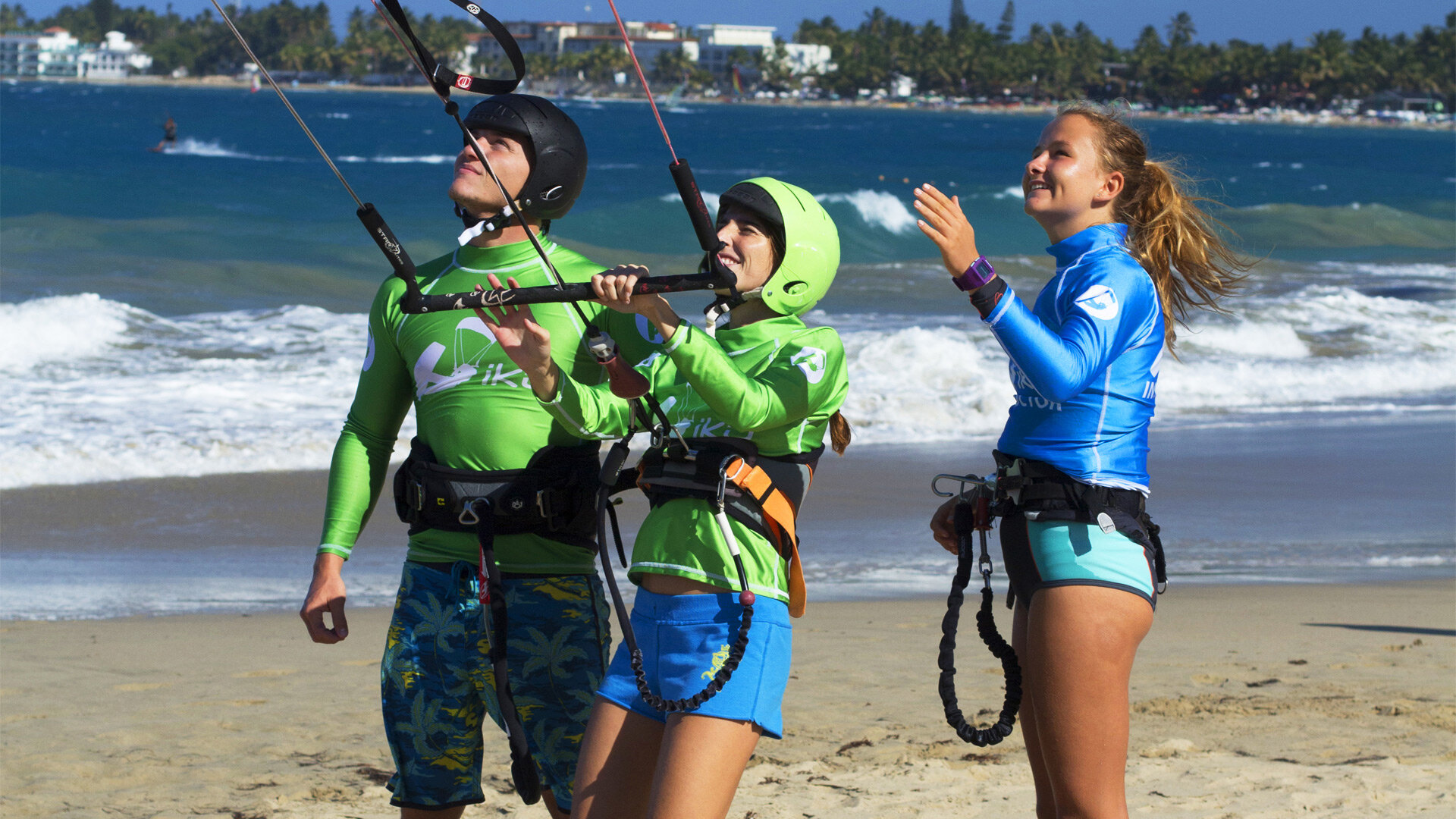
The Essential Guide on How to Get Started and Learn Kitesurfing
How do you begin the journey to learn kitesurfing? Watching a few videos on YouTube? Having you brother-in-law teach you? Buying your own second-hand equipment and figure out how to fly a big 12 square meters kite by yourself? Ugh, sounds sketchy. What about booking some professional lessons with a qualified kiteboarding instructor to learn the sport with confidence? Sounds better, doesn’t it?
As we’ve seen in the previous ultimate guide, kitesurfing is a sport enjoyed and beloved by people of all ages and walks of life. Every year, thousands and thousands of newcomers embark on this adventure. However, kitesurfing remains an action sport involving high risks if not learned and practiced properly. Therefore, it is (literally) vital for everyone to learn the sport in the right way.
If you are reading this guide, it definitely means that you are taking a step in the right way. We will tell you how to safely get into kitesurfing by choosing the right kite school and making sure your instructor is qualified. In addition, we will give you insights into the time and financial investment, the structure of a typical lesson and the challenges of learning the sport with extra tips about safety and ideal destinations around the world to plan your next trip.
Just so you know, we have structured this guide to be read from top to bottom and/or skipped around per sections; read, share and use this guide as you wish. Enjoy!
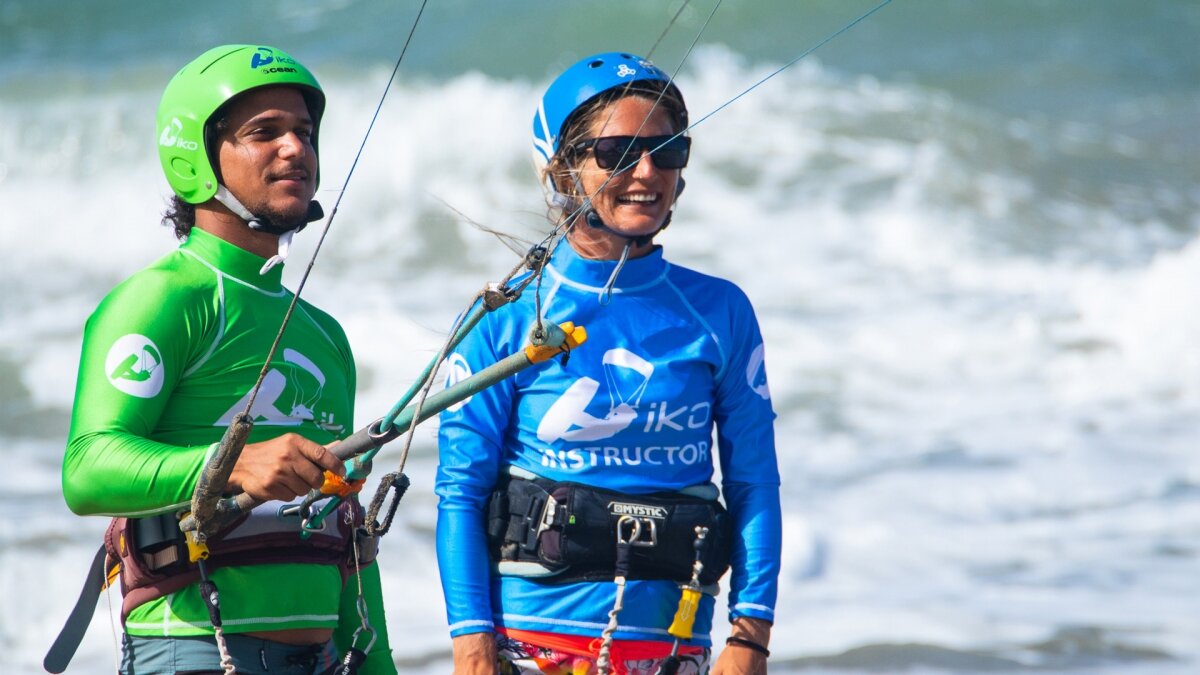
Do you need lessons to learn kitesurfing?
The most common question asked before learning to kitesurf is if someone can learn this sport by themselves and if classes are really necessary. To help answer this question and put it into perspective, let's dive in and compare kitesurfing with another well-known action sport: scuba diving.
When you think about scuba diving, what comes to mind? Finding Nemo, shipwrecks, pirate treasures... What else? Do you think about buying equipment and going in yourself to explore the deep seas or do you consider maybe getting some formal training first?
Anyone with common sense would consider taking classes when going underwater for extended periods of time, especially when it involves complex equipment that requires to learn how to use it. Also, when thinking about classes, you would probably look for a certified diving center that employs qualified diving instructors you can trust.
Well, if it’s not clear by now let’s make it crystal clear: same as scuba diving (or any other action sport), to learn kiteboarding you absolutely need to learn with a qualified instructor at a professional kite school.
Kitesurfing is a sport involving a steep learning curve (more on that below) due to the sophisticated equipment and the technique required to practice the sport. You need to have someone qualified to introduce you to the sport in the best way possible (to get you addicted too!)
Below we have broken it down so you can get insight and knowledge to better prepare yourself for your entry into the world of kitesurfing.
Learning with a kitesurf instructor
It is true! Many sports and activities you can generally pick it up and go after some trial and error and quick pointers; bicycling for example. Kiteboarding, on the other hand, is completely different.
Do not make the mistake of going with family members, friends or uncertified kiteboarding MacGyvers to teach you. Having a kite instructor by your side will help you learn the theoretical and practical aspects of this sport in a safe way.
To really build that solid foundation there is no way around learning with an instructor. Not only will you be safer overall, but lots of the techniques are counter-intuitive and you need someone with the proper skills and knowledge to instruct you.
Doing so you will also save money, save time and progress faster. Kitesurfing is an “expensive” and technical action sport where a lot is going on. Having access to the knowledge, the equipment and insights from an experienced instructor will definitely accelerate your progression.
But not only that... Learning with an instructor is definitely more fun! No one is born with the intuitive ability to control and pilot a 12 meters kite in the air. You will make mistakes and it is part of learning kitesurfing. Your instructor will be there to support you, coach you, and more importantly, keep you safe through these trials and errors.
Additionally, the access you get to equipment will take off that initial investment of buying gear to test out the sport or make the mistakes on someone else's equipment before buying your own.
Lessons with a qualified kitesurf instructor
It’s one thing to take a lesson with a kitesurf instructor, it’s another thing to take a lesson with a qualified kitesurf instructor. Let us explain what we mean.
First of all, "qualified" means that your instructor has undergone a professional training endorsed by a reputable organization (such as IKO!) and has received a qualification that highlights the instructor’s skills as a kiteboarder and more importantly, the instructor’s ability to teach the sport safely and effectively.
Why is it important? Because your qualified instructor will teach you according to a precise and recognized methodology that respects the safety and quality standards established by the organization endorsing the qualification.
In the same way, some schools will also commit to these quality standards for their operations and affiliate their business to this organization (such as all the IKO Centers). Learning at an affiliated school will guarantee the proper practices overall of kitesurfing. This is especially reassuring to new kiters as well as existing ones.
An affiliated school such as all IKO Centers will be able to address your needs both on and off the water. Affiliated schools have fully functioning facilities to help ensure you have everything to be ready and get into the water safely. While on the water, affiliated schools are equipped and trained to use and handle water rescue situations in case of emergencies.
Despite kiteboarding being an action sport, just like scuba diving or skydiving once it is properly learned it can be safely practiced. This all means in the end that taking proper kitesurfing lessons with an instructor who is trained and part of an internationally recognized organization will help guarantee a complete course that will lay a solid foundation for you to progress on.
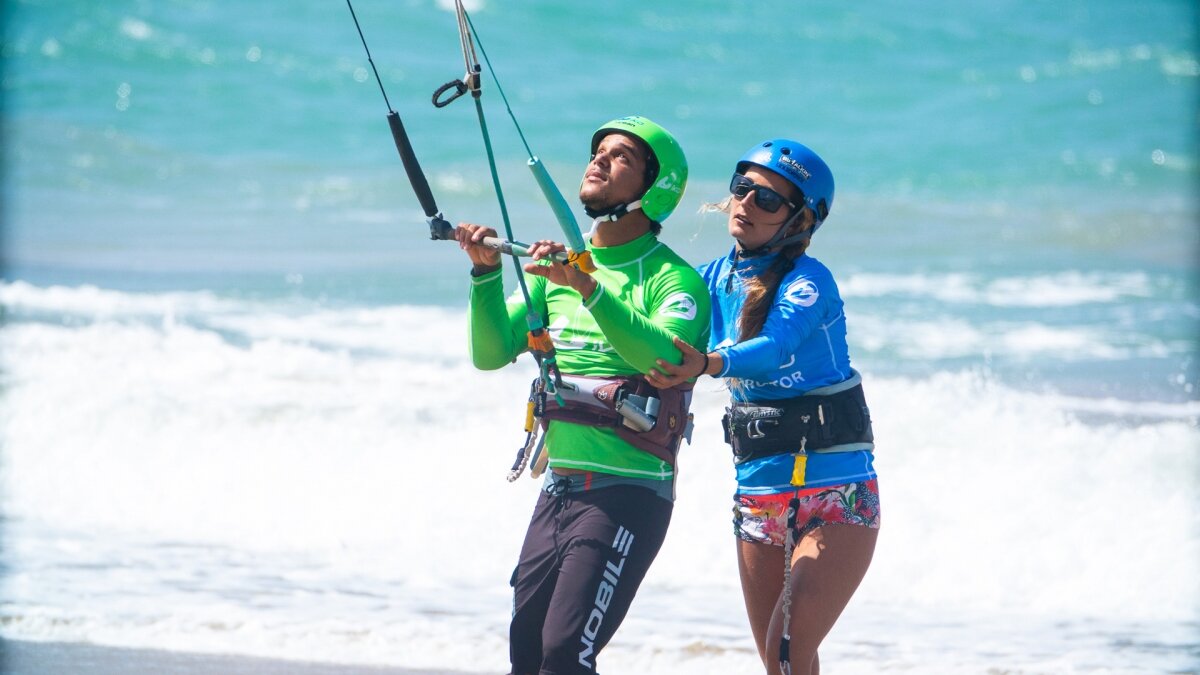
What are the steps to learn kitesurfing?
Hopefully, we made it clear that it is in your best interest to learn kitesurfing with a qualified instructor. Not only does a qualified instructor will have the appropriate teaching knowledge and skills, but will also follow a determined learning path optimized for a safe and efficient progression.
That progression path might differ from one organization to another (IKO and others), but in general, follows the same first steps that are fundamental to learning kitesurfing. Let’s take a look at these steps and brush the big picture of the skills you will learn to master with your instructor.
Learning to fly a kite
Your instructor will first introduce you to the sport by teaching you various safety rules and skills on land before going into the water. For example, you should be shown how to assess the wind and the physical location (the spot), as well as showing how to properly manage the equipment, set-up your kite and control the kite in the air. This is an exciting step: you will fly a real kite for the first time!
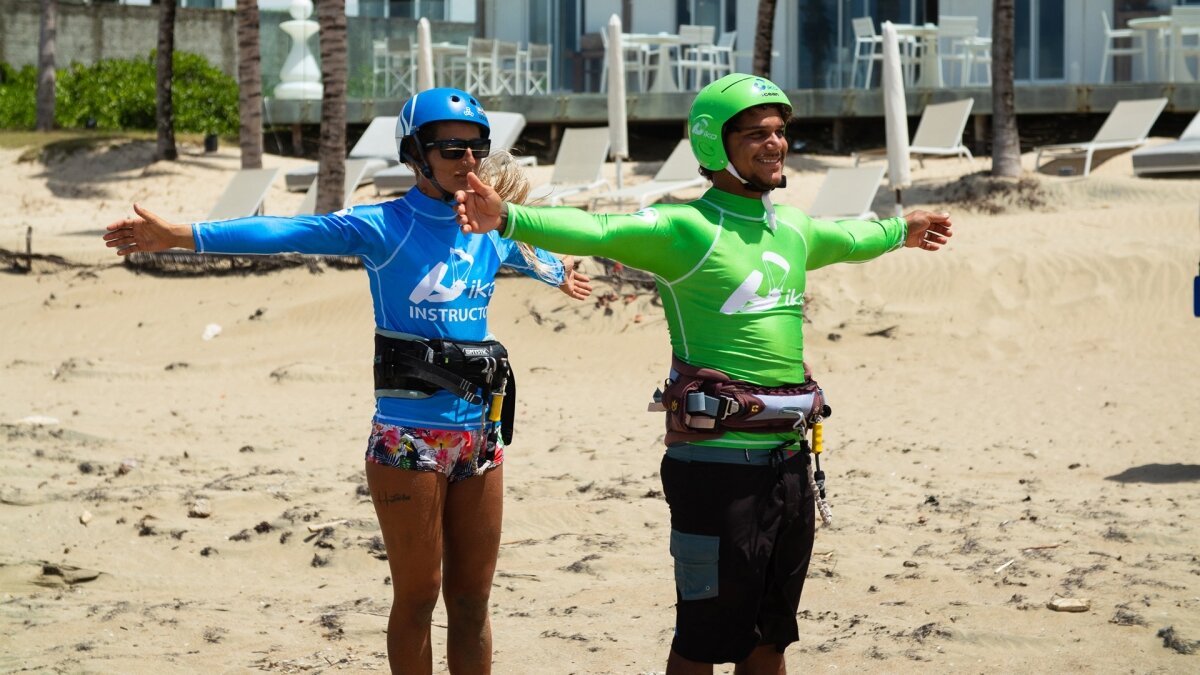
Body-dragging in the water
Once you’ve learned how to properly control the kite, it will be time to get wet! You will go in the water to put your skills to the test and experience the full potential of the wind. With your instructor, you should learn how to use the kite power to body-drag in the water, how to relaunch your kite, self-rescue, recover your board, and more. It's a really fun step: you'll be able to "play" with the kite and while being dragged behind your kite (without the board at first). By the end of this progression step, you should be attempting your first water-starts with the board in your feet!
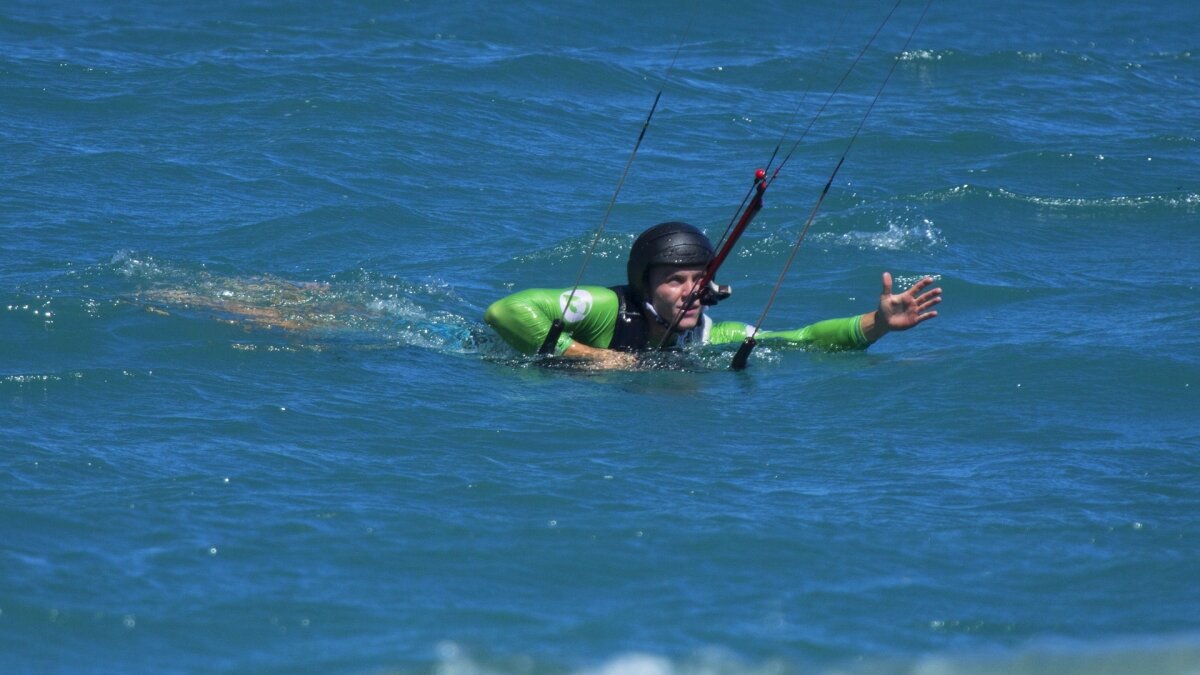
Get on riding
When you start getting on the board more constantly, you will learn how to keep on riding for a longer time and distance. This step is at least where you want your lessons to take you (providing you have enough time). At this level, your instructor should show you how to control your speed, ride upwind, switch to toe-side, and help you focus on important safety skills like self-launching and doing a self-rescue in deep water. As an independent rider, you should be able to ride on your own and should start thinking about buying your own gear (if you haven’t done it already).
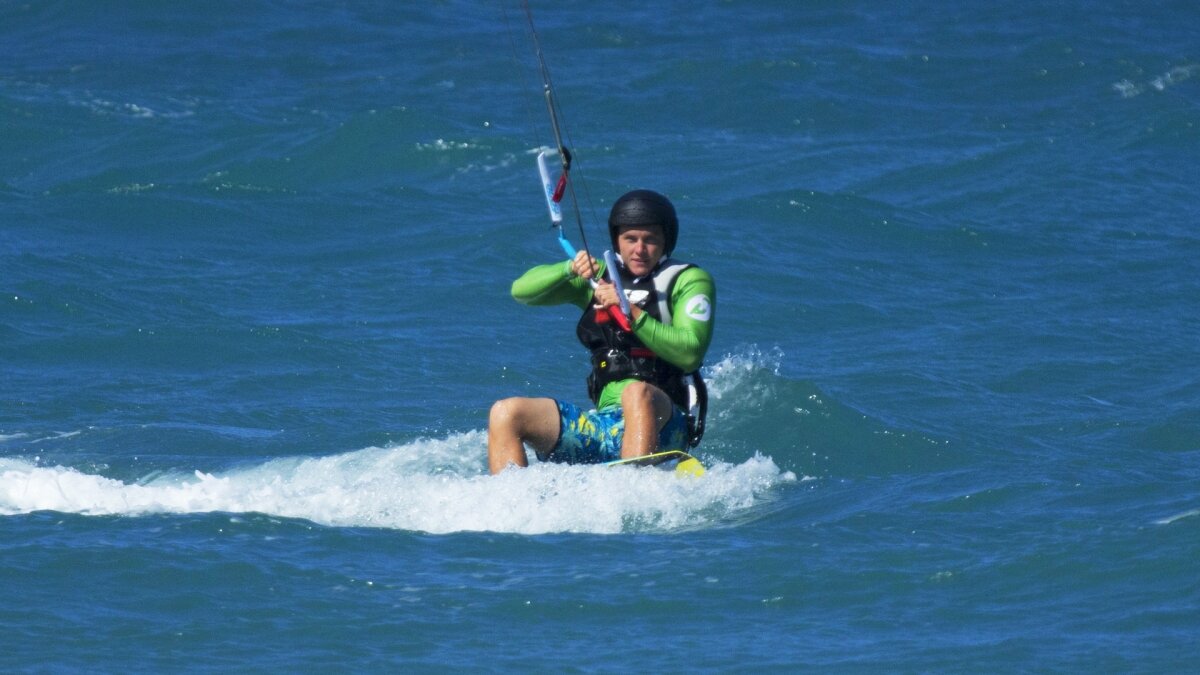
Progressing to the next level
A lot of people won’t feel the need to progress further into kitesurfing, as being an independent kiter allows you to have a lot of fun on the water and enjoy the core sensations of kitesurfing. However, for those looking for more advanced and stylish skills, this is where you can truly reach new possibilities. Your instructor should show you various techniques like how to jump, combine grabs, or jibe on your board, for example.
But more importantly, progressing at this stage means becoming a more well-rounded kiter and learning practical skills such as how to rescue other kiters (and their boards) and learning about theoretical topics such as understanding weather and tides, getting into the aerodynamics of kiting, etc.
Kitesurfing truly is a sport with infinite possibilities. After becoming an advanced rider you can start focusing on expanding your riding style into new disciplines such as freeride, freestyle, wave riding or hydrofoiling. We won’t go into the details of the progression path of each discipline, but let’s just say that it’s a lot of fun and that if you have an appetite for learning and progression, you will be served!
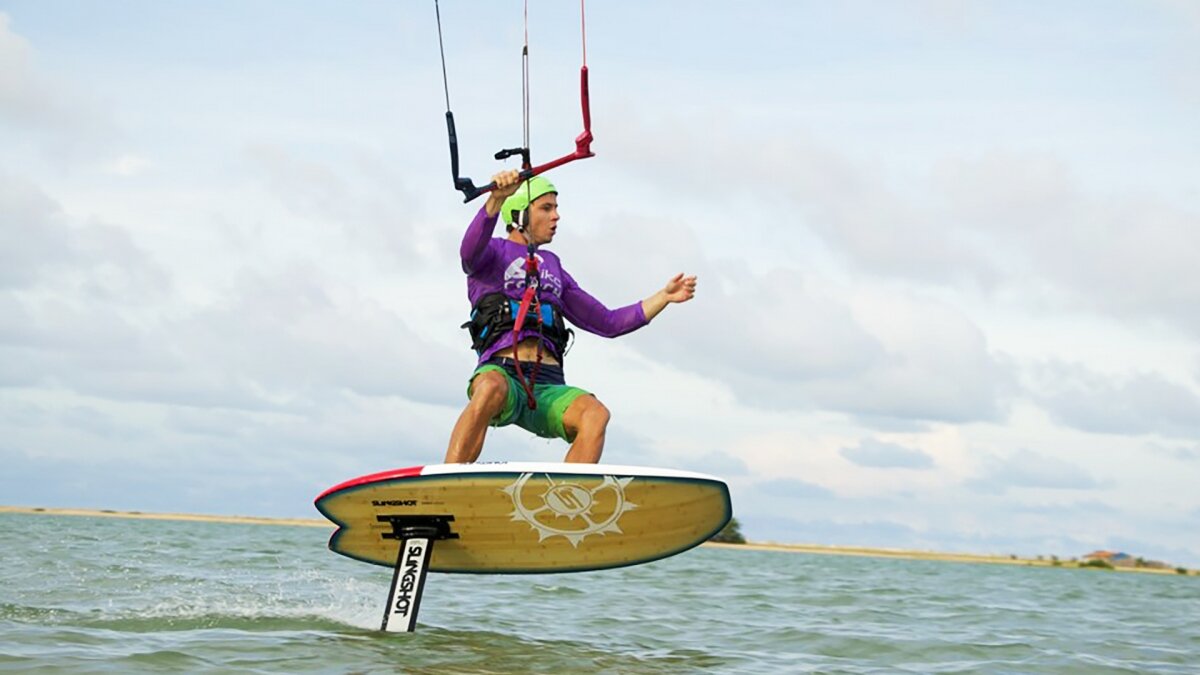
What does a kitesurfing lesson look like?
The structure and the content of a kitesurfing lesson may vary from one school and one instructor to another, although if you learn at a school affiliated to a reputable organization (such as IKO), it should be standardized. This means that you can expect the same level of quality at any IKO Centers you go around the world.
Let’s take a closer look at both the structure and content of a typical kitesurfing lesson to give you a better idea of what to expect. This way, it gives you a reference point for when you contact a school and inquire about their lessons before you book with them.
Structure of a kitesurfing lesson
Format: Kitesurfing lessons can be taken either in private, semi-private or group settings. Private lessons allow you to have your kite and your own instructor at all times with you. It's usually more expensive, but it allows you to learn much faster than semi-private (two students per instructor) or in a group lesson (more than two students per instructor). Having the undivided attention of your own professional instructor as well as the whole equipment to yourself is optimal to progress efficiently and at your own pace.
Duration: As for the duration of a lesson, it is usually 2 to 3 hours at a time. At some locations where the wind is plenty every day, schools will prefer doing 2 hours instead of 3 lessons to better distribute the load over a couple of days. In contrast, at locations where the wind is uncertain, schools will sometimes prefer to do longer sessions of 3 hours to take advantage of the wind when it’s there.
Moment: As for the date of your course and the time of day, it will obviously depend on the wind. The closest to reading the future we can do is rely on the weather forecasts. Most likely, your school will give you a range of dates and confirm with you a few days ahead. For kite spots where the wind is constant and regular, the school will book you on any given day and call you if the course gets cancelled because of no wind.
Location: The place where the course will take place depends once again on the direction and strength of the wind. Some kite spots are better suited for a certain wind direction (topography of the spot, obstacles to the wind, etc.). So-called "nomadic" schools have more than one spot to choose from and will decide on the day of your lessons depending on the conditions. For other schools with a fixed location, they generally have only one spot that works with various conditions.
Content of a kitesurfing lesson
We previously covered more or less what are the steps, techniques and skills needed to learn kiteboarding. Here, let’s paint with a broad brush the general rundown of a typical lesson.
The school will give you a time to show up on a certain date. Make sure that you arrive in advance, especially on your first lesson as you might need to fill in some papers. It is also nice to take the time to meet your instructor and get familiar with the school and the spot.
After checking in, it will be time to prepare: put on your water clothes, drink some water, apply sunscreen, etc. When the time of the lesson comes, your instructor will take charge of you and will initially begin with the lesson plan. As with any kitesurfing session, your instructor should practice with you how to assess the conditions, choose with you the adequate gear and show you how to set it up yourself. Sure, you will do all of this together, but you also need to be independent in those steps.
Then, the first steps of practice will begin and you will practice what was defined by your instructor. Learning kitesurfing should be fun, don’t be afraid to exchange with your instructor and ask if you have any questions. At the end of the lessons, you will pack the equipment together again. You will debrief on the lesson, see what comes next, and make sure that you schedule the next lesson.
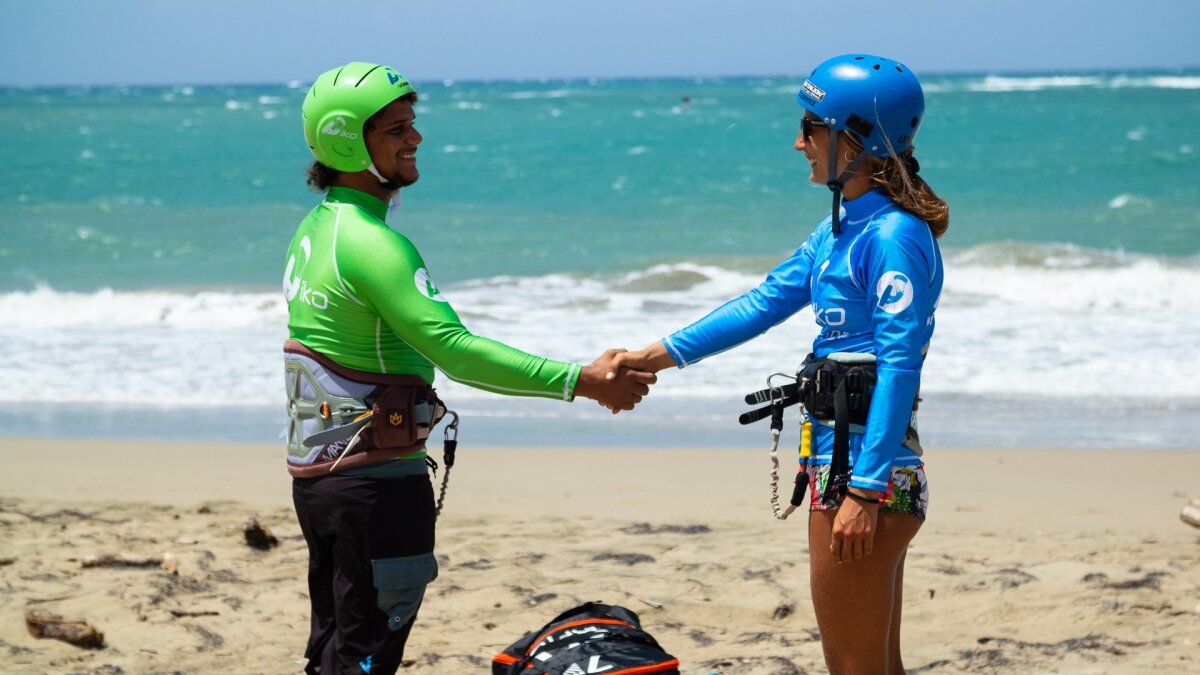
What happens after you’re done with your kitesurfing course?
You might be done with your current lessons, but in kiteboarding, you are never done learning! Even if your lessons are over, you might not be ready to go kitesurfing on your own.
Organizations such as the IKO ask their instructors to certify their students at the end of their last lesson. Depending on where you have gotten in your training, your instructor will then certify you up to that point. With this certification, you will be able to continue your training or prove your level to any IKO Centers in the world. If you have not finished your lessons, you will be able to pick up exactly where you left off.
The purpose of the certification is to prove your level. Your level is based on what you have already trained and elaborates what next steps are ahead of you in terms of further learning. It acts as a passport to help IKO Centers and Instructors know more about your kiteboarding skills and level at a glance.
How much time and money does it take to learn kitesurfing?
kitesurfing is unlike any other sport. It is not hard to learn, but it is very technical because we deal here with specific equipment designed to harness nothing less than the power of the wind.
As we mentioned above, you absolutely need to learn with a (qualified) instructor not only to speed up the process but most importantly to keep you safe during your lessons and to learn everything you need to know to become a truly independent kiter.
You will soon realize that there is a lot to learn and that you will not master kitesurfing in a day or overnight. Indeed, the learning curve is pretty steep (especially in the beginning). For that reason, let’s take a look at exactly how much time does it take and how does it cost to learn kitesurfing.
How long does it take to learn kitesurfing?
The truth is that everyone learns at their own pace. There is no maximum or minimum time frame to learn kitesurfing since everyone starts with different skills, expectations and goals.
With that being said, if we had to put a number down, we could say that most people are able to complete the first three steps mentioned above (learning to fly a kite, body-dragging in the water and get on riding) in an average of 6 to 12 hours of lessons (from total beginner to starting to ride). Often it takes longer than that, rarely it's less.
Why does it take so much time? Well, you guessed it: there are many things to learn! And a good instructor will not only show you how to kite but will teach you how to become independent in all facets of the sport.
The next popular question is: is it possible to learn in one day? Unfortunately, this question simplifies what it means to kitesurf. If kitesurfing is getting up on the board and riding back and forth to the same point - yes, it is possible for some seasoned watermen to do so in a matter of a few hours. However, this does not mean that they know how to safely and effectively kitesurf overall and might translate in the long run in an increased risk of injuries or accidents.
If you plan to learn kite on a trip or during your vacations, we advise you to plan at least a week to give you enough time. A week also gives you some margin if the wind is not good every day, or if you want to take one or two rest days. On the other hand, if you are able to take more than a week, it is even better: on the first week, you learn how to ride while on the second you can practice (and enjoy) as much as you want.
How much does it cost to learn kitesurfing?
Everything comes with a cost and kiteboarding is no exception. Though one part of the saying that people forget is that… “Everything comes with a cost but everything has a different value”. Haven’t heard that one before we bet!
The upfront costs of kitesurfing will vary depending on certain variables: where you learn and which brand equipment you buy. Now you can consider other costs as if you have to commute to a kiteboarding location whether by car, boat or plane, as well as other factors, though the list of different combinations is endless which is why we will focus on the general costs that are going to arise no matter what: Buying lessons and eventually buying your own equipment.
Kitesurfing lessons will vary and scale in price per destination and school. If you are learning in tourist destinations such as Dubai for example where the cost of living is high, you can expect to pay a higher price than taking lessons in another cheaper location around the world. The difference, for instance, can be paying 100 USD an hour in Dubai while paying 40-50 USD an hour elsewhere. However, in general, most individuals invest around 500 to 800 USD into kitesurfing lessons to get a complete course and reach a certain independent level.
As with the lessons - buying kitesurfing equipment will vary per country you buy in and brand. Other factors such as importation costs and taxes vary per destination so we will stick to the common. In general, for the latest brand new kite, bar, harness, personal flotation device, helmet and board you can expect to invest around 3,000 USD.
This investment can last anywhere from 1 day to 5 years or more depending on the care and usage of the equipment. Even though the average is 3,000 USD there are those who spend less on a quiver and those who spend more on having larger quivers.
For example, those who want a surfboard, foil board, various kite sizes for different conditions, multiple bars and boards to ride can easily have up to 10,000 USD worth of equipment! While some individuals have spent 1,000 USD on their personal quiver buying great second-hand gear. As you can tell it varies - sort of like with anything: buying a car, home or bicycle as additional examples.
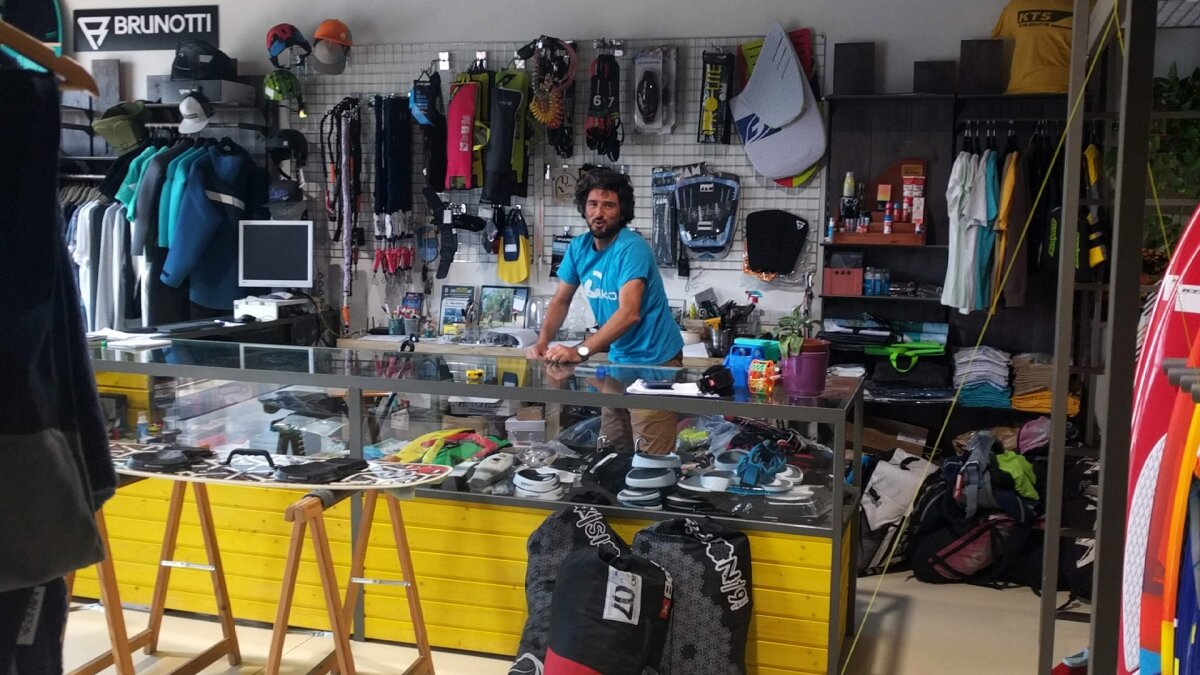
How challenging is it to learn kitesurfing?
On the previous topic above, we just covered how much time and money is necessary to invest to learn the sport. Now, let’s take a look at some of the other barriers that might prevent someone to learn the sport, and more importantly, we’ll provide solutions to overcome these challenges.
The main challenges to learn kitesurfing
When you see these guys out there on the water strapped to a big kite up in the air while riding in the waves and jumping around, kitesurfing might look really hard to practice and even more to learn. The fact and the matter is that kiteboarding has a pretty steep learning curve compared to other sports such as surfing, wakeboarding or windsurfing.
However, as we mentioned already throughout this essential guide, learning the sport with a qualified instructor will enable you to acquire the knowledge and skills needed to climb and reach the peak of that curve in an appropriate time.
Your training will usually be spread out amongst a couple of days as you have limited physical and mental energy each day. Generally, one day of lessons can entail 1 to 3 hours of practice. Here in these regards, you will know yourself better to your energy levels and athleticism. Kitesurfing will take all you got if you want to push yourself and on the other side can be quite mellow if you want it to be; it's up to you.
On average, a proper and complete kiteboarding course with a professionally qualified instructor will be on average 75 USD an hour. Remember this is an average, it can be more and it can be less depending on the destination and organization (and this is not including your food and board + flight tickets or transport if needed).
We did not mention the glue that will hold you together as a rider through all these challenges and that is motivation. If someone is not motivated to learn no matter how much time, money, energy or perfect conditions one has - they will not learn. Having some motivation and willpower to learn will be an important part of overcoming the physical and mental challenges up ahead when learning.
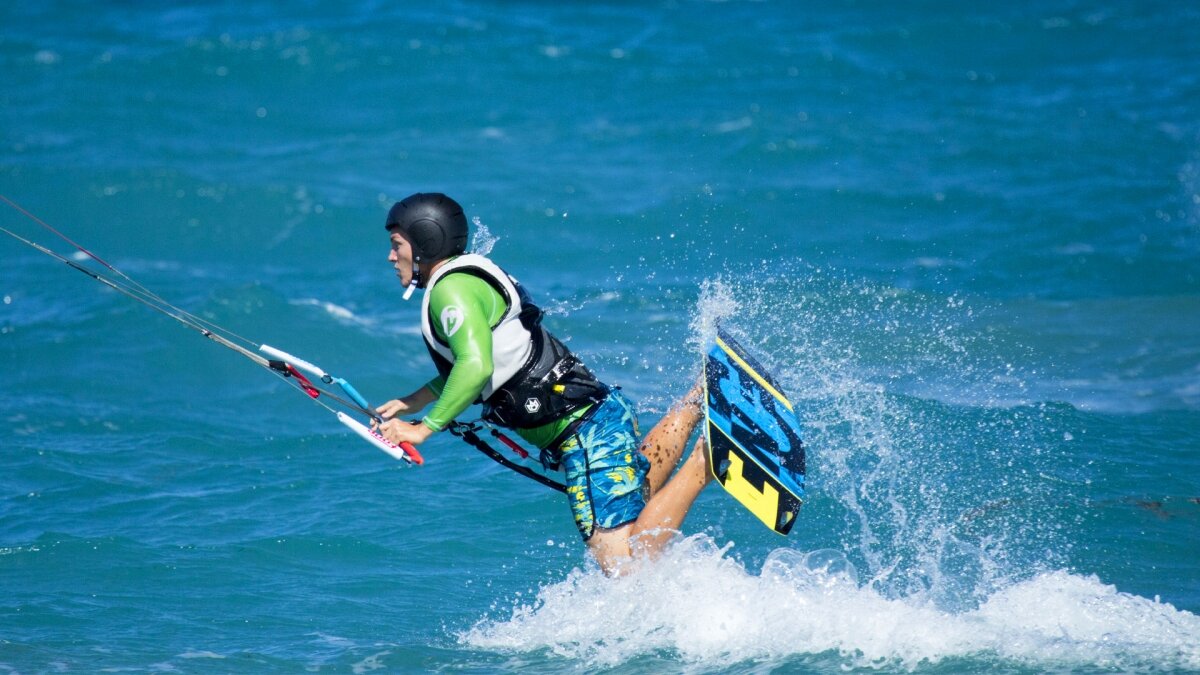
The solutions to overcome the challenges
If there's a will there's a way they say and it's true! These challenges are minor in the grand scheme of things. Finding the motivations is possible if you really want to - just as finding the time, money, energy and destination to do kitesurfing. Here are a couple of solutions to the most common challenges.
Motivation: If you have any little spark of interest into kitesurfing and are having a hard time push through to actually getting lessons; find a partner! Yes, you heard right! Bring someone along for this new adventure. Propose the idea to your loved ones, work partners or even talk to a school to see if you can find a buddy to learn with! Now is it better to learn in private or in a group? The fact of the matter is private is theoretically better though if you need to begin in a group then do so and later on you can both split into private lessons.
In addition to finding someone to push yourself against to get kitesurfing - if you want to do it yourself; you can motivate yourself by blocking out the time (within the next six months) and paying the money in advance for your course and flight tickets + lodging (if needed). Paying in advance is one of the easiest ways to commit.
Time: Time is hard to come by nowadays though it's possible when things are organized and planned. Whether you are working for someone or your own boss - planning ahead as much as six months will help turn this dream of learning to kitesurf into a reality. As previously mentioned, if you want to learn while on vacation, it is recommended to book more than a week. The ideal is two weeks as this can cover for windless and rest days.
Money: We generally are all working and earning some money one way or another. If your work or business is not producing you enough to save extra on the side for your kitesurfing adventure consider getting a side job or cleaning out your garage! Additionally, you can be on the lookout for some schools that offer kite packages at bargain prices while other schools offering better rates when booking many hours. This is one trick often overlooked to getting into the sport.
Energy: If your energy levels are low - consider doing some light body conditioning, healthy eating and stretching. Building up the proper habits is key to living and maintaining a healthy lifestyle. The physical strain of kiteboarding is quite light - so being generally healthy will be ok to get up and going! No excuses here.
Destination: If you don’t have any qualified instructors or schools near you - there are countless destinations all around the world where one can safely learn and practice kitesurfing. Do some research online or check out our destinations map to match up your available time with an appropriate destination to go practice.
Training: If you want to be better prepared for kitesurfing before actually doing it - the sports that will help you the most are ones similar such as surfing, paragliding, skateboarding, yoga, wakeboarding, cable parking, stand up paddle boarding and anything relatable to balance, board and kite flying skills.
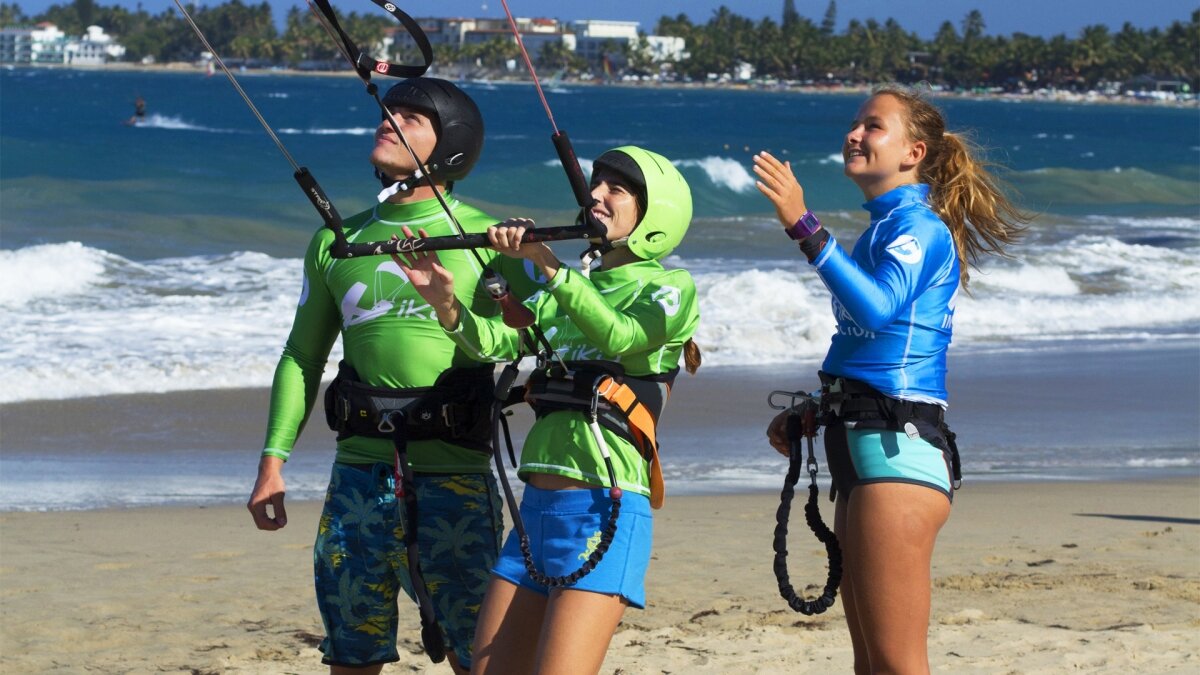
What equipment do you need to learn kitesurfing?
The amounts of different equipment out there in the kitesurfing market might confuse an individual to which equipment is essential and needed to learn the sport. When learning at an affiliated school such as an IKO Center you will be taught by professionals that are fully prepared not only from a theoretical and practical aspect but also an equipment one too.
For your lessons, you will be supplied with all the equipment one might need to learn. The school should provide you with the equipment you will be wearing: personal flotation device (PFD), helmet, harness and some will supply you a wetsuit (if needed). This equipment should fit you nice and snug when tightened and put on. It is important to remember that you will have to bring your own bathing suit, rash guard, sunglasses, and sunscreen if needed. Some of these personal items are sometimes available for rent or purchase at the school.
Now that you have all your equipment on, you will be then supplied with a kite, bar, board, and pump. Your kite, bar, and board will vary in accordance with the wind forecast and your level. When you are taking lessons, you do not need to purchase your own equipment as it is, most of the time, included in the price of your lessons. Once you have completed your lessons - if you are interested in continuing the practice of the sport, it is recommended to purchase your own equipment to save money in the long run.
Where should you go to learn to kitesurf?
Location, Location, Location! Does it really matter where you learn as much as whom you learn with? The answer is that the latter matters more. Who teaches you is far more important than where you learn though it is good to know that there are hundreds of destinations (if not thousands) around the world to safely learn kitesurfing at.
Some destinations will be more attractive to one person than another destination - this all comes down to personal preference. Every place has its own intricate perks and pitfalls which is why it's best to choose a destination in regards to your personal preferences and not necessarily a top 10 list.
What conditions are ideal to learn?
When you are thinking of where to learn and go kitesurfing it is best to inform yourself about your nearby home spots first. Do you have any certified schools nearby? If not, what’s the nearest one? Can you commute there? Once you have properly informed yourself of your local spots you can consider learning there or somewhere else.
Now when you are considering to learn or go kitesurf somewhere in the world - you will have to assess your possibilities in accordance to when you can go. Is the destination in season? Other questions will be if it's in your budget and even if you can fly there with your passport or obtain a visa? Once you factor out which places you can go and even want to go, you have a few other factors to consider though before mentioning these other factors let's talk about what are the best conditions to learn in?
Some might believe that there are no such things as perfect learning conditions though there are such ideal conditions. The ideal learning conditions for generally anyone is when the spot is warm, flat and shallow reefless waters: 2-5 feet deep, with lots of open flat land on the shore as well on the water with no obstacles and stable winds ranging 12-18 knots.
These are the ideal conditions that are best and easiest to learn in. Very few places in the world actually offer this though it is possible to find at certain destinations during certain points in the year. Countries such as the Turks & Caicos, Egypt, Mozambique, and others can match the above ideals.
Even though you might wish for ideal learning conditions the flip side is that less than ideal conditions will better prepare you for the world of kitesurfing! How so? Well, an important skill in kiteboarding is “flexibility and adaptation” both physically as well as mentally. Encountering different conditions and challenges will make you a more well-rounded kiter.
We all know that mother nature is unpredictable as well as surroundings change. Some places might be shallow, crowded with people strong winds while other places might be uncrowded, deep waters with light wind and waves. Despite the conditions varying per destination, the stable factor no matter where you go is to learn with a qualified instructor. This is the best way to ensure your safety and success in the kitesurfing world.
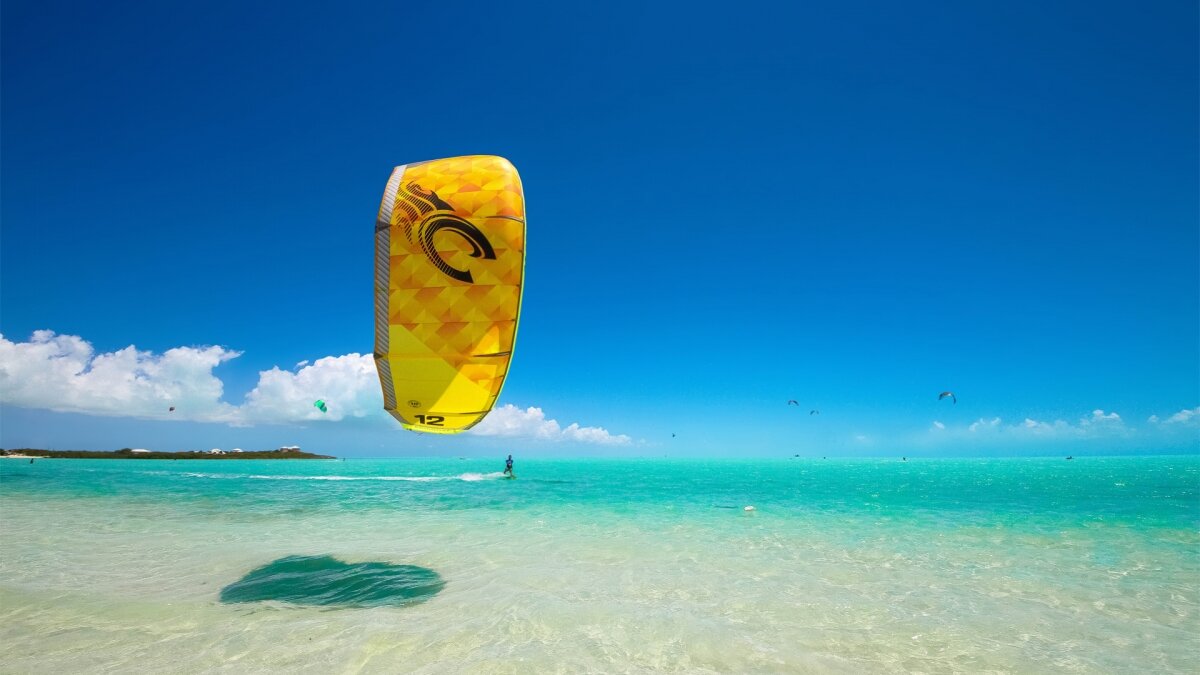
How can you prepare for your kitesurfing lessons?
Before taking your first lessons there are a few things you can do to prepare. Below are some noteworthy ones.
- If you live nearby a kite spot, go check it out on a windy day when kitesurfers are out! Observing kiters while they are preparing, going in and out of the water and riding will help stimulate your brain. This brain stimulation will help you connect dots later on in your course as well give you ideas of questions to ask to better understand what is actually going on.
- If your nearby kite spot has an affiliated school and/or qualified instructors there, pass by and say hi! Talking with professionals about the sport and gaining insight directly from them is a priceless way of learning.
- If you are not located near a kite spot then the next step is the internet. On the internet, there is lots of information. Reading guides such as these are one way while also actively watching both fun and educational kitesurfing videos.
- If you are planning to go on a kitesurfing vacation - make sure to do all your research beforehand. Talk with local schools at the spot to decide the best time to come, what you should bring for that spot in specific and how much time you should plan to be there. Once you have all the details set - book your flights and lessons beforehand to ensure and guarantee a fun kite trip.
Conclusion
Now that you know how to go about learning to kitesurf, we hope that you take the next step: Action! Get out there and actually learn by putting pen to paper and making it happen!
Kitesurfing is the eighth wonder of the world; now you know it! This ultimate guide is a tool to go about discovering it. For those of you that will act now and want to go further in-depth about learning to kitesurf with the International Kiteboarding Organization - read our next ultimate guide: Why learn with IKO!
Aloha and Windy Regards!
.png)

